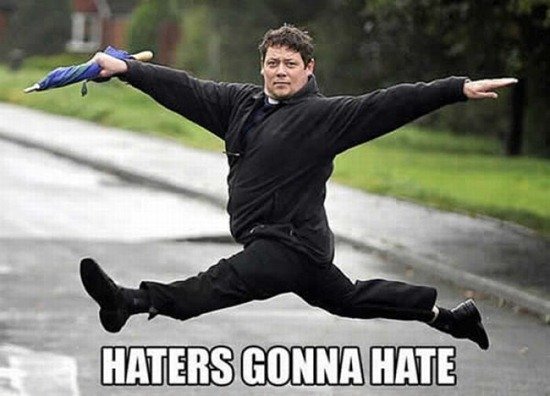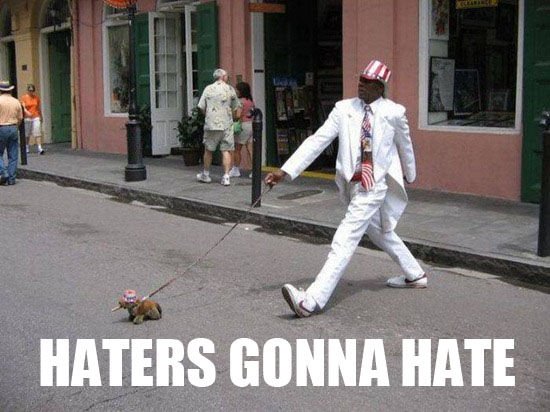Memes in content marketing: You’re doing it wrong!
At the time of writing this blog, the most recent episode of brands dropping a royal clanger online is this story about a certain brand of bleach trying to shoehorn a new range of racially diverse emojis into a half-baked marketing opportunity. It’s a textbook example of content marketers’ tunnel vision when it comes to throwing enough of the proverbial at the online wall and hoping some of it will stick.
Was the tweet in question taken out of context? Not the point. The point is that those responsible showed a complete lack of awareness when it comes to the space they’re trying to occupy. In a way it’s understandable. When you’re working on producing web content for a brand, you end up living and breathing that brand. It’s easy to forget that, for 99.9% of the internet-faring population, the web is a place to watch videos of people falling over, discuss the downward spiral of civilisation and marvel at cats.
Respect the space
The sad fact is that most people aren’t, by default, in the mindset to gratefully accept your efforts to sell a product to them. What might be the result of an hours-long meeting to come up with the perfect pun to link your brand to the latest trend or craze is, to most people, just going to look like a bad joke. We blame Oreo.
So how do you produce content which is relevant, engaging and not in the least bit patronising to the audience? It’s about respecting the space. Assume your audience to be not necessarily hostile, but certainly lukewarm to your initial efforts. You’re going into their space and asking them to give you money. Take a step back and think, ‘if I hadn’t spent the last week working on this content, would it genuinely engage me?’
The key word there is ‘genuinely.’ The internet is a jaded, cynical place, with today’s digital natives sick and tired of being marketed at, going to great lengths to avoid it or deliberately misconstrue the message. Authenticity is a rare and valuable coin. Spend it wisely.
Learn the language of the internet
It always helps to be fluent in the local language. The internet speaks in the language of memes, most often images with accompanying text which have evolved through the online hive mind into broad expressions of ideas. Memes can be modified through replication to make a new point, but always using the original as a point of reference.
The term can technically refer to any recurring unit of social exchange, but images are the most enduring favourite. Chances are you’ll recognise a few of the more popular memes. Facepalming is an oft-used way to express dismay at the sorry state of a given situation, while Haters Gonna Hate is a highly adaptable meme demonstrating assured nonchalance in the face of adversity...



All well and good so far. But I see all too many examples of brands trying to tap into the power of memes with their web content, especially when trying to engage a younger audience, and getting it tragically wrong. The effect is similar to that of an elderly uncle trying to share a joke with the kids at a family gathering and coming out of it just looking a bit weird.
Use the right tools for the job
Like speaking in broken, informal English at a board meeting, misusing language can alienate your audience and leave you in a worse position than when you started. Rest assured, there are whole online communities dedicated to mercilessly pointing and laughing at those who try and fail to get down with the kids to make a quick buck.
If you haven’t grown up with the rapidly evolving culture that is the internet, you’ll be pleased to know there are resources and tools to help you inform yourself and check you’re up to date. Know Your Meme is probably the biggest existing and most regularly updated archive of memes and internet phenomena. In most cases it includes a detailed history of each meme, explaining its origins, context and why exactly it’s so amusing.
It’s also important to remember that the language of memes comes with its own strict rules on structure. It’s odd when you consider that it’s a medium based on constant flux and evolution, but using the right font, letter sizing and layout is often the difference between a successful meme and an obvious fail. Meme Generator provides templates for the planet’s most popular memes and lets you customise and perfect your efforts in seconds.
If you’re gonna do it, do it right
Ultimately, this kind of web content will require trial and error if it’s not something in which you’re immersed. The good news is that the transient nature of the web means that most attempts which miss the mark will be forgotten in no time.
Keep practising, it shows awareness of the culture you’re trying to tap into if you can dust yourself off, laugh at yourself and keep engaging. You only need to be lucky once and the simplest efforts can attain that much sought-after viral status. In many ways, the internet is the great equaliser, giving smaller brands a platform to compete with huge marketing budgets if their efforts are well-intended, authentic and respectful.
…But if you’re in any doubt, pictures of cats are, and always will be, pure gold.



